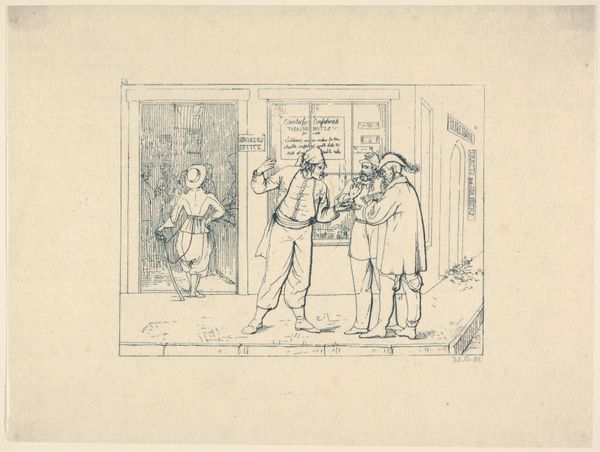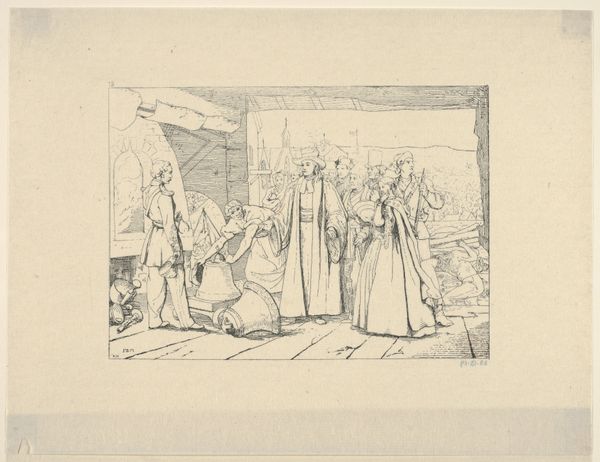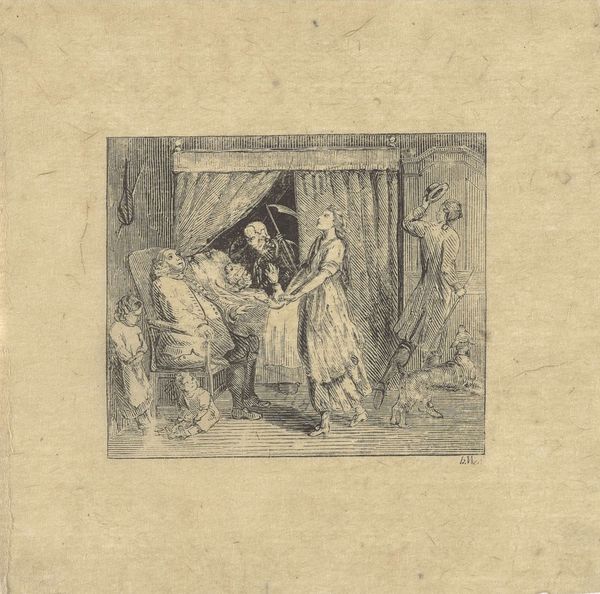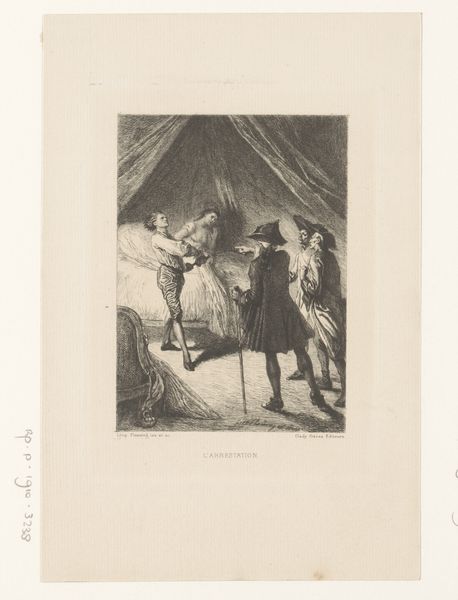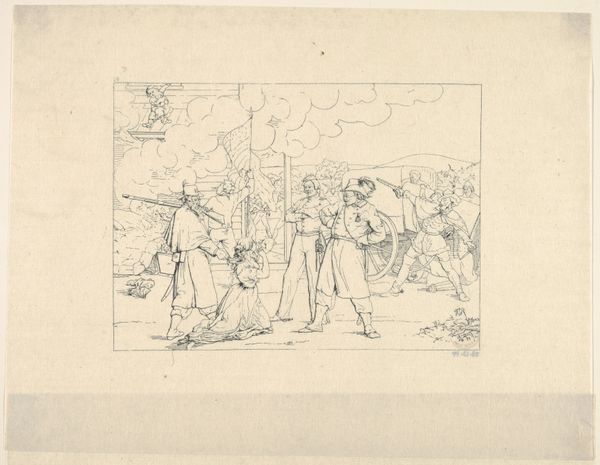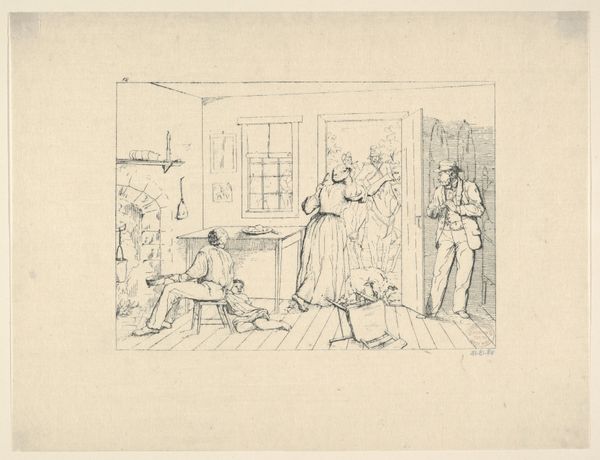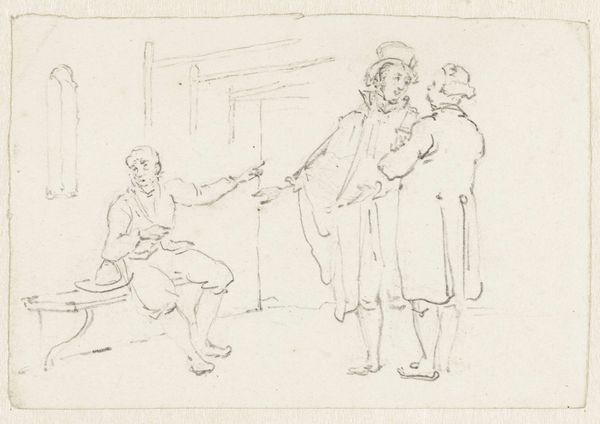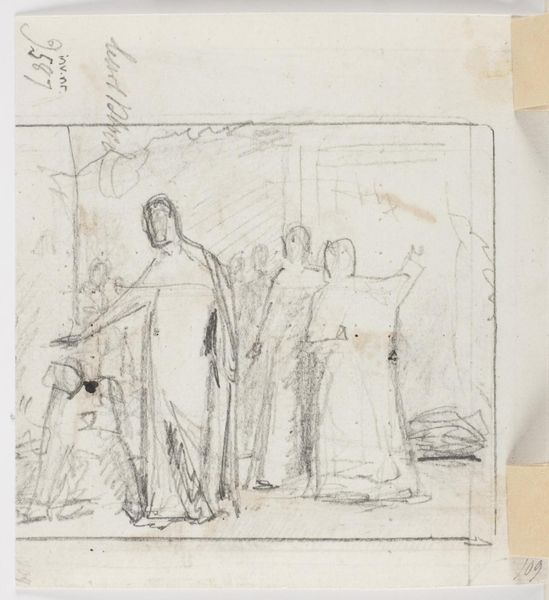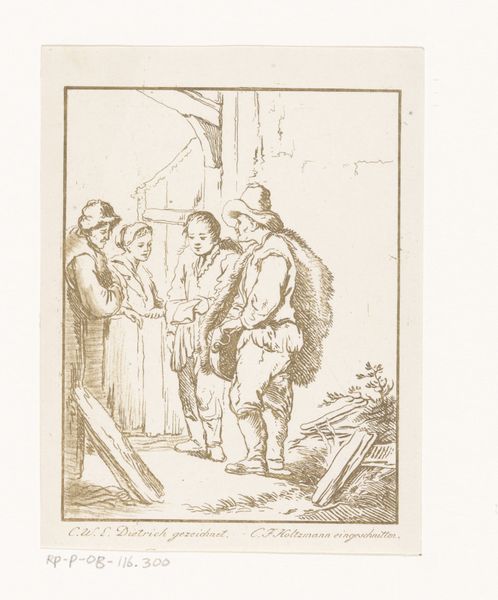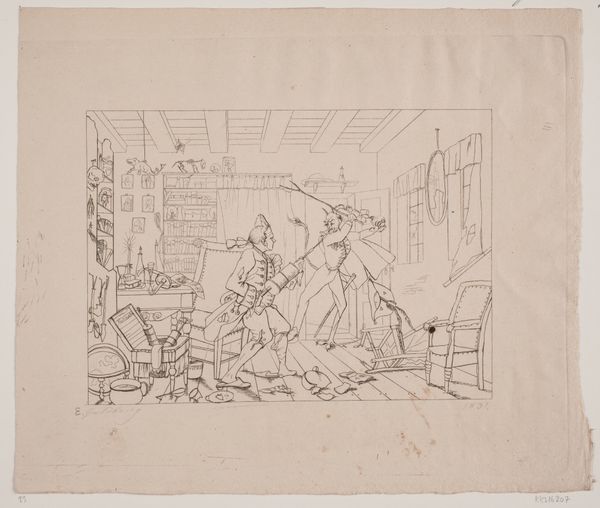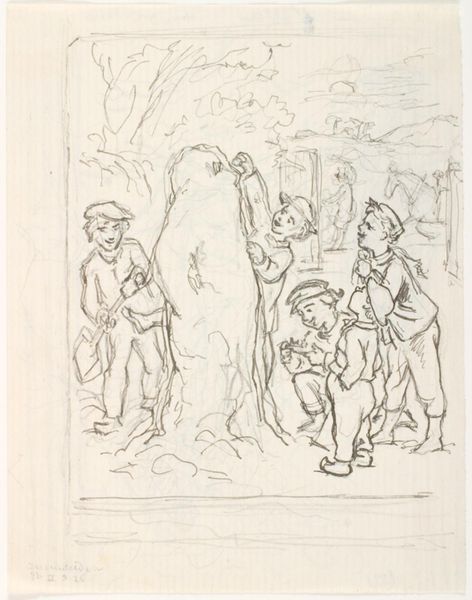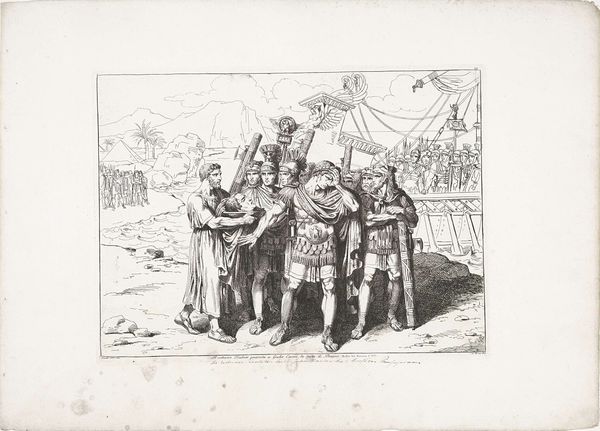
Kinderen bij een straatverkoper langs een kade c. 1782 - 1837
0:00
0:00
drawing, pencil
#
drawing
#
neoclacissism
#
pencil
#
cityscape
#
genre-painting
Dimensions: height 210 mm, width 247 mm
Copyright: Rijks Museum: Open Domain
Editor: So, this pencil drawing, “Children by a Street Vendor Along a Quay,” likely made between 1782 and 1837 by Pieter Barbiers, offers a charming slice-of-life scene. I'm struck by its candid quality; what formal aspects particularly draw your eye? Curator: I notice primarily the linearity, how the artist relies on line to construct form and space. Observe how the carefully delineated cobblestones create a sense of depth, leading the eye back to the figures by the water. Do you perceive how the varying weight of the pencil strokes—thicker in the foreground, finer in the background—contributes to this effect? Editor: I do now! It's interesting that you focus on the lines, while I initially thought about how the vendor's cart creates a central point, visually dividing the children on the left from the architecture to the right. Curator: Precisely. The strategic positioning of elements directs our reading. The vendor's cart and the figures clustered around it are intentionally juxtaposed with the relative solidity of the background elements, drawing our focus and creating a rhythm of form and negative space. The composition suggests a visual narrative about the interaction of commerce, class and the everyday. What implications can be drawn? Editor: I see. It is all very calculated, isn't it? The perspective, the linework... Even the unfinished nature adds to its observational quality. I initially saw it as simply a charming scene. Now I appreciate the complexity that line and form bring to this seemingly simple moment. Thank you! Curator: It's been a pleasure. The deceptive simplicity is precisely what compels a closer look. We may discover so much about an artwork and ourselves with considered analysis.
Comments
No comments
Be the first to comment and join the conversation on the ultimate creative platform.
